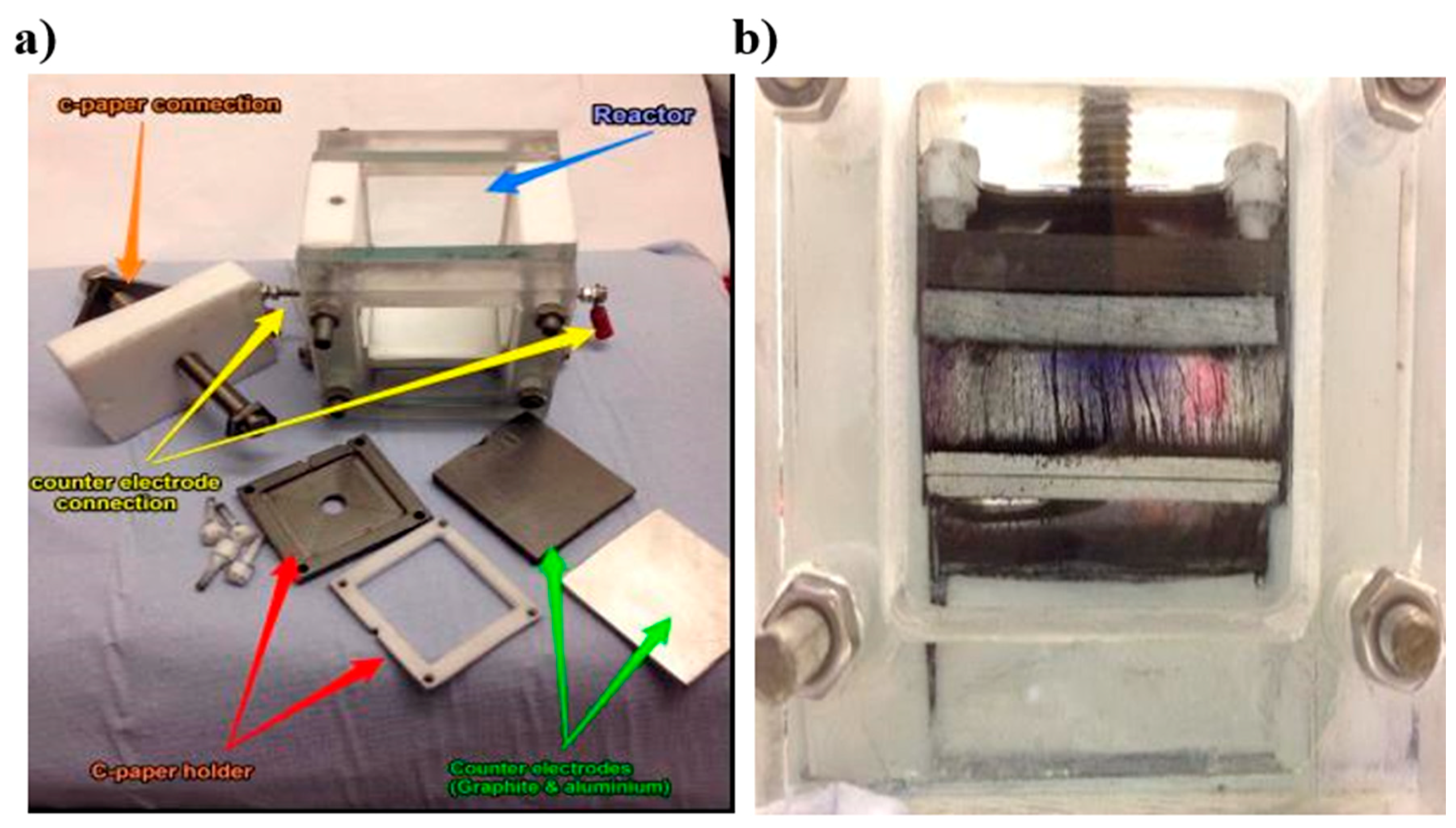Most redox flow batteries (RFBs) use standard carbon-based electrodes without any sort of physicochemical modifications. In this regard, engineering of the carbon electrode structure for enhancing RFB performance is significant with respect to the reduction in stack costs. The important aspects for a good electrode are dependent on the interaction of its microstructure, surface chemistry, and performance with: (1) Solvent wetting properties; (2) pressure drop; (3) electrochemical surface area (ECSA); (4) tortuosity; and (5) mechanical properties under compression. To effect such electrode materials, researchers have modified them by means of carbon nanotubes (CNTs) or graphene, but applications have remained limited to one or the other nanomaterials and not a combination of the two. İn this regard, recently, electrophoretic deposition (EPD) was applied to modify commercially available carbon papers with reduced graphene oxide to enhance hydrogen/vanadium fuel cells. However, an application of a combination of both graphene and CNTs is rare for hydrogen-based flow cells.
İn this project the student will use the EPD method to simultaneously deposit graphene and CNTs on carbon based substrates to prepare electrodes for evaluation in hydrogen/vanadium flow batteries. A horizontal EPD reactor will be used for this purpose that will enable graphene (and not agglomerated graphite like flakes) to deposit on the carbon substrate. Both graphene and CNTs will be prepared via novel methods in SUNUM labs and the student will use them in the EPD reactor. İf time permits then some electrochemical testing may also be performed. A dedicated researcher will be available to guide the student in most cases. Also consulation with world class researchers at İmperial College London may also be possible during the course of the project.

About Project Supervisors
Barun Kumar Chakrabarti
barun.chakrabarti@sabanciuniv.edu
ResearcherID: B-9054-2010
ORCID: https://orcid.org/0000-0002-0172-986X
https://www.linkedin.com/in/barun-chakrabarti-23465ab3/
Online publication records:
66 journal papers published with h-index of 34
Scopus Profile: https://www.scopus.com/authid/detail.uri?authorId=23018021200 AND https://www.scopus.com/authid/detail.uri?authorId=57203501722
Google Scholar: https://scholar.google.com/citations?user=MLhadHsAAAAJ&hl=en&oi=sra
Research Gate: https://www.researchgate.net/profile/Barun-Chakrabarti-2
.jpg)